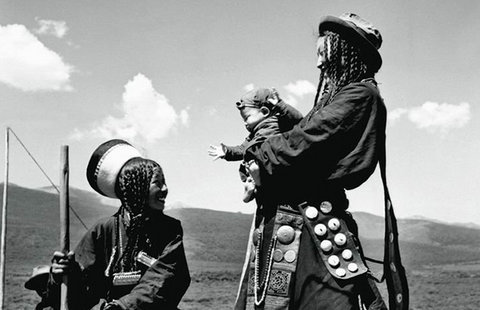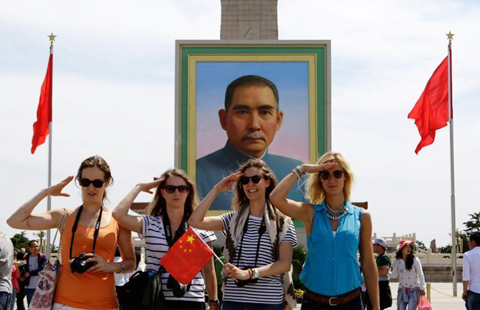
Thanks to recent agreements with Mexico, quality tequilas are now finding their way to China's best bars and supermarkets. Mike Peters chases the blue agave's magic for Cinco de Mayo.
My personal bucket list, the tally of things I'm determined to do before I die, features a surprising amount of glassware and train travel. There is that meandering journey through the wine country of France (many tasting stops, please). And then there's the Tequila Train.
I hadn't heard about it when I last visited Mexico, or I suspect I'd have been aboard, no doubt with a goofy souvenir sombrero, a similarly goofy smile and a big-mouthed glass easy to refill with the next margarita. The Tequila Train runs from the picturesque mountain city of Guadalajara to the desert town of Tequila in Jalisco state, which is ground zero for the production of distilled spirits made from the blue agave plant. While the Tequila Train may sound like a college fraternity party on wheels, today's passengers are likely to be hotel managers, chefs and sommeliers, from top eateries from France to Singapore, eager to learn more about a liquor that's enjoying a surge in this era of "gastro-globalization".
As the Mexican holiday Cinco de Mayo (May 5) approached this year, I found myself at a tequila-tasting event hosted by Alba Xitatlic Aviles Hernandez, the Regulatory Council of Tequila's chatty representative for Asia. Aviles is based in Shanghai, but was in Beijing to introduce capital drinkers to the finer points of her country's prized tipple.
"What do you taste?" she asks as she holds up a generous shot of amber-hued nectar, poured into a champagne glass to highlight the color and aroma.
For those who usually sip their tequila in a fruity margarita, the premium tequila in the raw is a revelation, with its faint nose of vanilla echoed in the flavor. There is a surprising softness in the mouth feel.
We are sampling aged tequila (reposado), the middle grade of tequila's five classes. Cocktail drinkers are most familiar with white (silver) or yellow (gold) types, while those who savor a quality shot straight tend to explore the three classes that are defined by how long they are aged in wood barrels. Reposado tequilas, for example, must be aged for at least two months; if they are in the barrels longer, they acquire more golden color and a higher grade - extra-aged, or anejo.
Beyond the five classes (see box), there are two broad categories of tequila. Premium tequila is 100-percent blue agave, and it's fairly new to Chinese drinkers. In June 2013, after a state visit to Mexico by President Xi Jinping, a ban on importing premium tequilas into China was lifted, and the good stuff started arriving two months later, when more than 70,000 bottles from 10 brands landed in Shanghai. The arrival was celebrated at the House of Roosevelt, a famous club on the Bund, and trade officials said at the time they expected Mexico's tequila exports - a robust 170 million liters in 2013 - to jump 20 percent within a decade.
"Regular" tequila, legally defined as made with 51 percent of its distilled sugars from the blue agave plant, has been in China longer.
"There are about 300 kinds of agave plants," Avila tells sippers at a Mexican-embassy sponsored food festival recently at the Beijing Hilton. "But only alcohol made from the blue agave can be labeled tequila. The others can be used to make other liquors, also popular in Mexico, such as mescal."
Like wine, tequila has terroir: Plants harvested from a hillside, for example, will absorb different minerals and contain more sugar than their flatland siblings, because the ratio of water to sunlight will be better (lower).
As she relates how tequila can only come from the volcanic soils of Jalisco and four other Mexican states, Avila's talk is peppered with the words and phrases of a sommelier.
That is no accident.
"Our regulatory model is copied from that of Champagne," she says later, to ensure that every bottle is properly region-specific and of the labeled quality. Her agency has registered 1,360 brands in her home country, and individual blue agave plants are literally tracked from birth. "Every blue agave in the system gets a serial number at the time of planting," she says, noting that her agency monitors planting, harvesting, distilling and bottling.
Raising the glass in her hand, she adds: "We know precisely where the agave in the tequila we are drinking here came from."
The Mexican agency she works for is just 20 years old - "we turn 21 this year, so we can drink and drive," she jokes - which means it started with modern tools and measures to track the ancient craft of agave-distilling.
In China, where "fake" liquor is a perpetual cloud over cocktail bars, tequila lovers can feel relatively secure that their premium brands are the real thing, because it's so new in the market. In other developing countries - and even in Mexico - there is plenty of phony "tequila" made in underground laboratories and even bathtubs.
"But my friends in the cognac and whiskey industries here have been warning me: It will come," she says.
Contact the writer at michaelpeters@chinadaily.com.cn
At a glance
There are five classes of tequila. In order of increasing color (and cost):
* White (silver) is bottled straight from the second distillation. It's clear as water, having no color.
* Yellow (gold) is also a fairly "young" tequila, a mix of white and aged tequila that has a pale yellow color.
* Aged (reposado in Spanish) is aged for about two months, faintly golden in color thanks to the barrel wood. It has a faint vanilla scent and a softness in the mouth-feel.
* Extra-aged (anejo) has been barrel-aged for at least one year and for as long as three. The smell is sweet, with notes of butterscotch or caramel.
* Extra-anejo must be three years in the barrel and can be aged for up to 25.
(China Daily 05/05/2015 page24)








